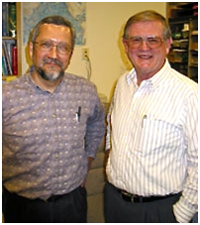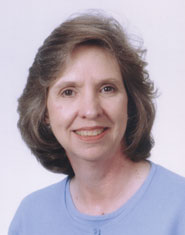History of AAPT — Two-Year College Physics
For a half-century AAPT members teaching at two-year colleges (TYC) have played a prominent role in the association's leadership, and AAPT has also been able to directly assist TYC institutions and their teaching physicists grow professionally. Indeed no other facet of the U.S. physics community has depended more directly upon its interactions with AAPT.
Direct involvement of the AAPT in TYCs of the 1960s was stimulated by the priorities of the Commission on College Physics (CCP). CCP initiated the Panel on Physics at TYCs (PP-TYC), and at their first meeting at the U. of Maryland (February 1968) they decided to target work on technical physics courses, recruitment and preparation of TYC faculty members, and needed resource materials. Later that same year a workshop on physics at TYCs was held at the U. of Washington, and the resultant lecture resource packets were made available through the AAPT. Additional national CCP supported workshops on TYC physics followed. A report on a 1969 CCP "Conference on Technical Physics in the Two-Year Colleges" at Florissant Valley Community College (47 participants) was edited by Bill Aldridge and published in the September 1970 issue of The Physics Teacher. As described in the last section on CCP, the early 70's brought a phase-out of the CCP, and the AAPT was charged with maintaining several of its important initiatives, including the TYC efforts. Consequently the AAPT Committee on Physics in Two-Year Colleges (CPTYC) was formed in 1970. The first year's report of CPTYC was prepared by Herbert Peckham of Gavilan College [http://files.eric.ed.gov/fulltext/ED064059.pdf], and it concludes with a challenge.

"The continued expansion of the two-year college system in the United States has generated a growing need for the type of professional committee such as CPTYC. The fact that CPTYC is one of the working committees of the American Association of Physics Teachers reflects further upon the responsibility of the two-year college physics faculty to the broader physics community. More and more, what can happen in upper division education will depend upon what has happened in science education in the two-year college system. CPTYC has accepted the challenge to help stimulate and guide the growth of physics education in the two-year colleges. The support of this committee by the individual faculty members will determine the success of the enterprise."
In the early 1970's the AAPT approved funds for several issues of CRPTYC (Committee Report of the CPTYC) to be mailed to all TYC physics teachers. The CRPTYC in 1972 was numbered Volume II - with Volume III in 1973. However AAPT financial constraints at that time meant that if the CRPTYC was to be published and distributed in 1973, it would need to be on a self-sustaining subscription basis - or paid by a supporting institution. Nevertheless in retrospect the AAPT had significantly "picked up the ball" from the rather flush days of CCP, and it took the crucial first steps toward establishing a more visible, unified, and longer-term national TYC identity in physics.
 The decades to follow saw a continuing expansion in the number and scope of TYCs in the U.S., and the AAPT was able to play a strong role in bringing these geographically diverse (and often isolated) physics teachers together and help establish needed post-CCP funding for this cause. A number of ongoing physics teaching issues of special TYC importance were identified at an AAPT (NSF supported) 1989 conference for TYC physics faculty members, "Critical Issues In Two-Year College Physics and Astronomy-1990 and Beyond." The proceedings of that conference were published in 1991 by the association as Proceedings of the Topical Conference on Critical Issues in Two-year College Physics and Astronomy, AAPT, 1991. The outcomes of this conference also helped AAPT and PI Mary Beth Monroe (with co-PIs, Marvin Nelson and Carol Lucey) in laying the groundwork for a major ($1.2 million) NSF ATE (Advanced Technical Education) TYC proposal in 1995, "The Two-Year College in the Twenty-First Century: Breaking Down Barriers." Monroe's abstract from this AAPT award summarized the "TYC21" goals:
The decades to follow saw a continuing expansion in the number and scope of TYCs in the U.S., and the AAPT was able to play a strong role in bringing these geographically diverse (and often isolated) physics teachers together and help establish needed post-CCP funding for this cause. A number of ongoing physics teaching issues of special TYC importance were identified at an AAPT (NSF supported) 1989 conference for TYC physics faculty members, "Critical Issues In Two-Year College Physics and Astronomy-1990 and Beyond." The proceedings of that conference were published in 1991 by the association as Proceedings of the Topical Conference on Critical Issues in Two-year College Physics and Astronomy, AAPT, 1991. The outcomes of this conference also helped AAPT and PI Mary Beth Monroe (with co-PIs, Marvin Nelson and Carol Lucey) in laying the groundwork for a major ($1.2 million) NSF ATE (Advanced Technical Education) TYC proposal in 1995, "The Two-Year College in the Twenty-First Century: Breaking Down Barriers." Monroe's abstract from this AAPT award summarized the "TYC21" goals:
The project will improve learning opportunities for students at two year colleges - those that transfer, those that will become technicians in the high-technology work place, and all students for whom physics serves as a part of their college education. It will do this by establishing a network of physics faculty in two-year colleges. The network will consist of 15 regional organizations, coordinated and linked by a national steering committee. The development of the network of colleagues will allow two-year college faculty to share their successes as teachers and scholars with each other and with the broader physics community, it will increase their awareness of current developments in physics education research and innovative teaching strategies, and it will decrease the sense of isolation felt by many two-year college faculty members.
An overview of the state of TYC physics at the turn of the century may be found in Chapter 1 - "The TYC Story" of the AAPT SPIN-UP-TYC Booklet report (Edited by Melanie J. Norton) following the AAPT 2005 NSF award, "SPIN-UP/TYC: Strategic Programs for Innovations in Undergraduate Physics at Two-Year Colleges" [Tom O'Kuma (PI);Warren Hein and Mary Beth Monroe (co-PIs) http://www.aapt.org/programs/upload/spin-up-tyc-booklet.pdf].
Additional NSF grants to AAPT have followed that have supported intensive workshops for new physics faculty members at TYCs ["New Faculty Experience for Two-Year College Physics Instructors," PI - Scott Schultz, Co-PI's Robert Hilborn and Todd Leif]. And to help establish national expectations of quality TYC physics teaching, in 2002 the AAPT and its CPTYC committee published the booklet, AAPT Guidelines for Two-Year College Physics Programs.

